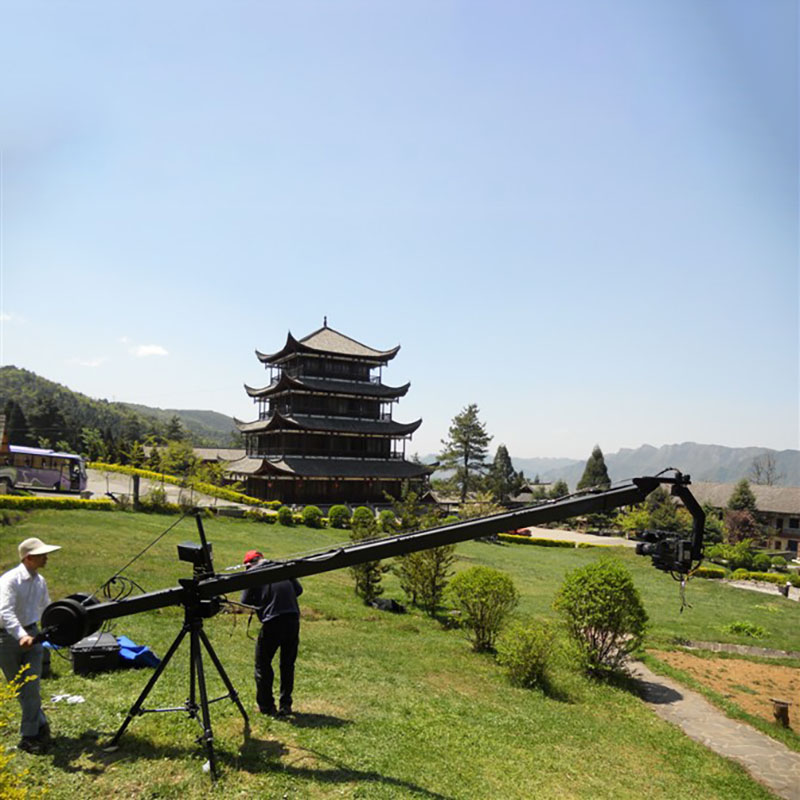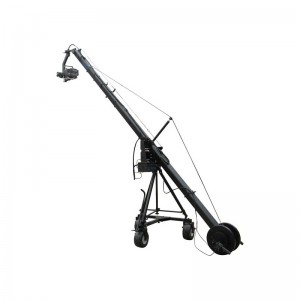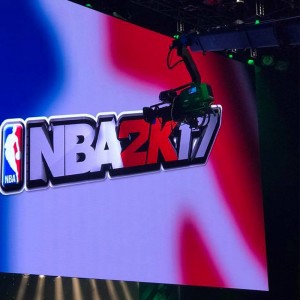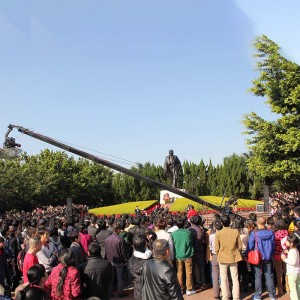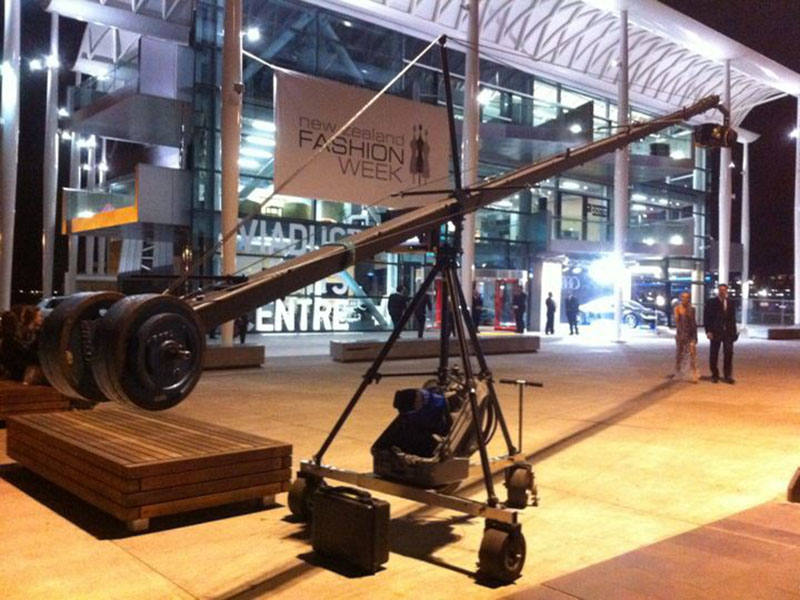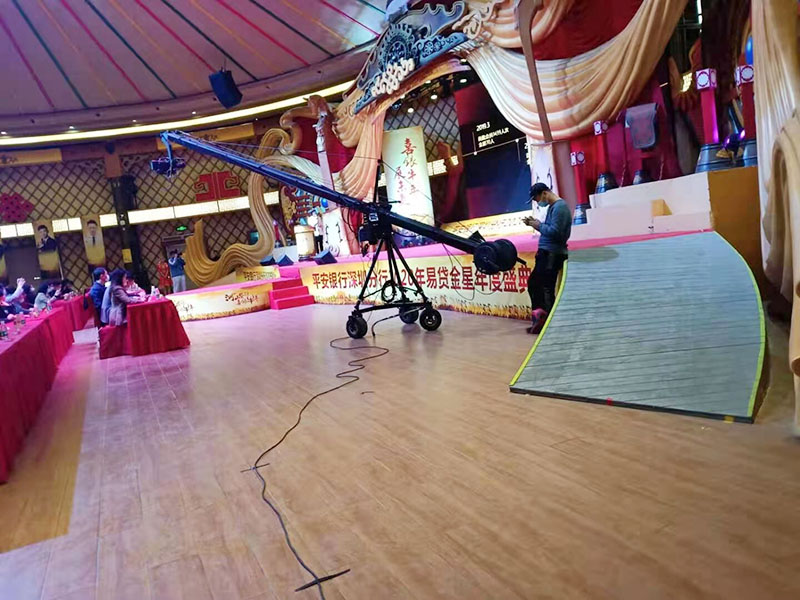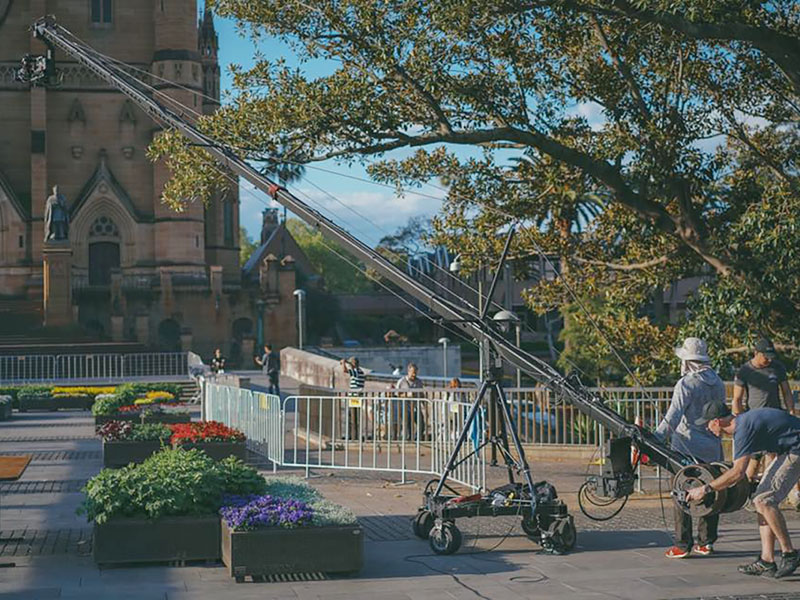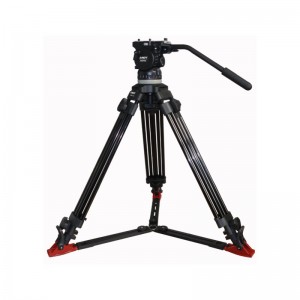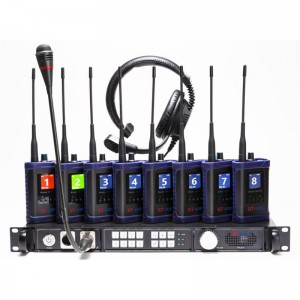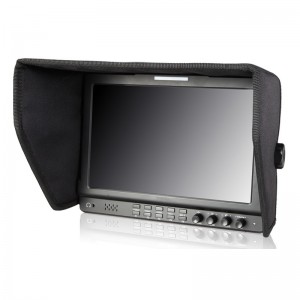Products
Jimmy Jib Crane
What is a Jimmy Jib?
Triangle Jimmy Jib -- uses triangular aluminum tubing for superior strength & rigidity. It is Simpler, Lighter & Packages Better. The inset controlling cable (includes three coaxial-cable, video cable and assistant cable) strengthen the reliability and stability of operation. The Jib arm is segmently designed that makes it easy to install and transport. Full function single-arm double-axis remote head applies quiet drive motors, which are smooth, fast, quiet & have no backlash. The Jimmy Jib is a lightweight, modular camera crane system constructed out of triangular aluminum tubing. It has a relatively small pack-down size which allows for easy transportation and setup almost any location. Depending on the terrain of the location, the Jimmy Jib can be easily repositioned between shots, wheeled easily and quickly on smooth terrain or with provided time and care moved happily to another set-up point for rougher surfaces.
How high can the camera go?
Our Jib configurations can allow us to raise a camera to a lens height anywhere from 1.8 meters (6 feet) to 15 meters (46 feet), and depending on configuration requirements can support a camera up to the weight of 22.5 kilograms. This means any sort of camera, whether it be 16mm, 35mm or broadcast/video. See the diagram below for specifics.
|
Jib Description |
Jib Reach |
Max Lens Height |
Max Camera Weight |
|
Standard |
6 feet |
6 feet |
50 lbs |
|
Standard Plus |
9 feet |
16 feet |
50 lbs |
|
Giant |
12 feet |
19 feet |
50 lbs |
|
GiantPlus |
15 feet |
23 feet |
50 lbs |
|
Super |
18 feet |
25 feet |
50 lbs |
|
Super Plus |
24 feet |
30 feet |
50 lbs |
|
Extreme |
30 feet |
33 feet |
50 lbs |
The strength of the Jimmy Jib it is the "reach" of the crane arm that becomes the important factor in creating interesting and dynamic compositions plus allowing the operator to raise the camera above obscuring power-lines or animated concert goers - thus allowing for a clear, high wide shot if need be.
How low can it go?
With the "Triangle" Jimmy Jib set up in an "under-slung" configuration, the camera can be made to rest almost directly off the floor - making the minimum lens height about 20 centimeters (8 inches). Of course, if you're willing to dig a hole, cut away a section of the set or shoot on a platform this minimal lens height can be reduced.
How long does it take to rig the Jimmy Jib?
We always suggest up to 2hrs to rig the Jimmy Jib. This will obviously depend on vehicle proximity and the working environment.
How easily can the Jimmy Jib be moved between locations?
After the initial build, the Jimmy Jib can be repositioned easily across level and clear ground on itʼs wheeled base. If the location doesnʼt have level terrain then a rebuild can take from 30mins+, depending on distance and conditions.

What is the required operating area for a Jimmy Jib?
Depending on the size of the jib and the amount of counter-weight required, the necessary space required to make the jib "do its thing" can vary. Please refer to the below diagrams for measurements depending to specific Jimmy Jib setups.
The jib is usually built into its own base which in turn can be mounted on large rubber (off road) wheels or studio crab dolly wheels. The section of the fulcrum point extends out at varying lengths depending on the reach of the arm you're using, up to a maximum of 13.2 meters (40 feet). The rear section extends away from the fulcrum in ninety centimeter (3 feet) intervals up to a maximum of three meters (9 feet) - but room also is required for the operator to stand at the back and control the boom arm.
How does the remote head work?
The remote head (or hot head) is operated with a joystick control panel. The controls are connected with a cable to the head, which contains fine pitch controlled electrical servo motors and gears. These are configured to allow the operator to pan, tilt and with an additional "slip ring", roll. This hothead is silent, allowing for effective operation in sound sensitive production environments.
How many people does it take to operate the Jimmy Jib?
Usually, two operators are required for the operation of the jib. One person "swings" (moves) the actual counter-balanced boom arm, whilst another operates the hot head. We supply all the operators / technicians required for operation of the Jimmy Jib.
How long does it take to set up a Jimmy Jib?
We will always ask you to allow one hour for a jib to be set up on a flat surfaced area, yet the jib is usually ready for operation in forty-five minutes. If the location is more hazardous, more time is required. It also takes around ten minutes to fit and balance the camera on the hothead.
Can the Jimmy Jib carry 4k or 6k Digital Cinema cameras?
Yes, we often shoot with some monster cameras including all the bolt-on’s. Depending on the size of Jimmy Jib built, the safe working load varies from 27.5kg to 11.3kg. Give us a call and tell us what camera you want to shoot with.
Which cameras do you use with the Jimmy Jib?
We love new technology and are excited to use new cameras as they’re released every few months. On location we often shoot with Digital Cinema cameras like the Sony FS7, Arri Alexa, Arri Amira and also the RED or Phantom High-Speed camera now and again. We’re also still asked to shoot with the well established Sony PMW-200 or PDW-F800. As for Studio or OB shoots, we happily work with whatever the facility wants to provide.
Film cameras
If a Focus Puller is required to operate the lens control for focus/zoom/iris, you will need to check with them if they prefer a wireless or hard-wired control unit. For the hard-wired option, a 10 meter (30 feet) cable is the minimum requirement - as well as a video tap for the camera.
Studio Environments
The Jimmy Jib is frequently used in studio scenarios and can be supplied on studio crab dolly wheels built on to a converted HP pedestal, built onto a solid track, or mounted on a conventional dolly.
Does the Jimmy Jib need a Technician or Assistant?
All quotes include a Jimmy Jib Technician as a second person with the Jimmy Jib. This allows faster and sometimes more dynamic shooting as well as reducing possible hazards recorded in the Jimmy Jib Risk Assessment and as defined by the Health and Safety Executive. *The 40ft Jimmy Jib requires two Technicians.


